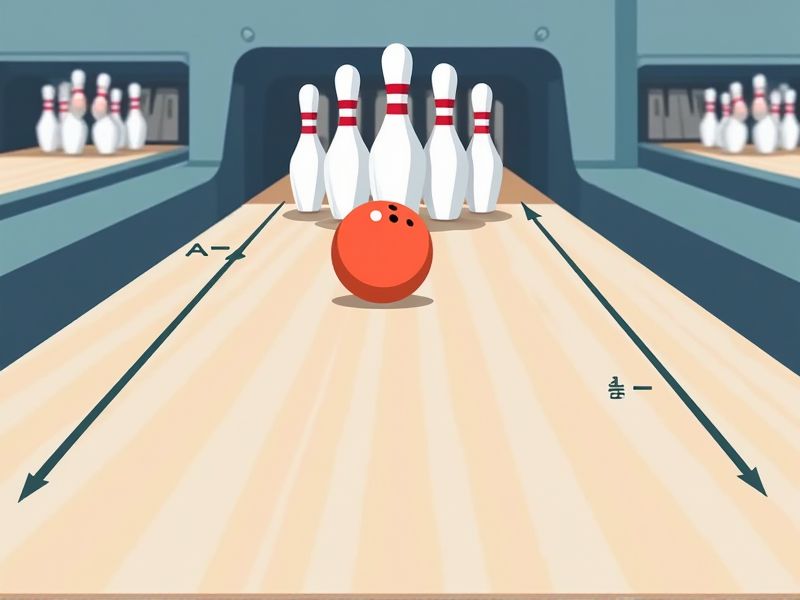
When considering the standard dimensions of a bowling lane, it's important to know that the lane itself is 60 feet long from the foul line to the center of the head pin. The width is precisely 41.5 inches, which provides just enough space for accurate play without being too forgiving. Including the approach area, bowlers have an additional 15 feet before the foul line to begin their delivery. Knowing these measurements can help both casual and competitive players better understand the game environment and practice more effectively.
Lane Length
The standard bowling lane length measures 60 feet from the foul line to the back of the pins. This distance is crucial for maintaining consistent gameplay and ensuring that bowlers can achieve optimal results with their technique and ball speed. The lane's approach area typically spans an additional 15 feet, providing bowlers with ample space to gather momentum before delivering their shot. Understanding the importance of lane length can significantly improve your overall bowling performance by allowing for better alignment and targeting.
Lane Width
The standard bowling lane width measures 41.5 inches, providing ample space for both the bowler and the lane apparatus. To ensure consistent play, the lane's design includes specific dimensions for the gutters, which are 9.25 inches wide, strategically positioned on each side. This precision in width plays a crucial role in influencing ball dynamics and player performance during competition. Understanding these measurements enhances your appreciation for the game's mechanics and helps you refine your bowling technique.
Approach Length
The standard approach length for a bowling lane is typically 15 feet, providing bowlers with ample space to build momentum before releasing the ball. This distance allows for a comfortable swing and promotes a smooth delivery, essential for achieving consistent strikes. Maintaining proper approach length not only enhances your performance but also minimizes the risk of injury by promoting good form. In professional bowling events, adherence to this standard is crucial, as variations can significantly impact scoring and overall outcomes.
Gutters Width
The standard width of a bowling lane gutter is 9.25 inches, designed for efficient ball deflection and consistent play. Each lane measures 60 feet in length from the foul line to the pins, with gutters positioned along both sides that serve as receptacles for errant rolls. This dimensional specification ensures that the maximum playable width of the lane is approximately 41.5 inches. Understanding these measurements is crucial for both bowlers and game designers to enhance gameplay and skill development.
Foul Line Placement
The foul line on a standard bowling lane is precisely located 60 feet away from the headpin, marking the boundary where bowlers must release the ball. This line is essential for maintaining fair play, as crossing it during delivery results in a foul, nullifying the roll. Typically, the foul line is painted white and measures 1 inch in width, ensuring visibility and clarity for bowlers. Your understanding of its placement and rules surrounding it can significantly impact your performance and scoring in the game.
Pin Deck
The pin deck of a standard bowling lane measures 12 feet in width and 24 inches in height. Positioned 60 feet from the foul line, it is crucial for striking pins, with the regulation arrangement consisting of ten pins set in a triangular formation. The approach area leading to the pin deck extends for 15 feet, offering bowlers ample space to prepare their shots. Proper maintenance of the pin deck and surrounding area is essential for ensuring consistent and fair conditions for competitive play.
Pin Spot Placement
The standard bowling lane measures 39 inches wide and 60 feet long from the foul line to the headpin. Pin spot placement is crucial, as the headpin is positioned 12 inches from the backboard and centered along the lane's width. Each of the remaining nine pins is arranged in a triangular formation, with specific spacing that ensures optimal gameplay, providing a pin distance of 12 inches between adjacent pins. Accurate pin spot placement not only enhances the game experience but also affects scoring potential, making it essential for bowlers to understand this layout.
Lane Arrows
The bowling lane features a series of lane arrows, typically positioned 12 to 16 feet from the foul line, that assist bowlers in aligning their shots. These arrows are crucial for targeting, as they provide visual cues that can improve accuracy and consistency; there are generally five arrows on each lane, spaced evenly across its width. Understanding their specific placement--each arrow lines up with a corresponding board--allows you to effectively adjust your stance and delivery for optimal performance. For beginners, focusing on the second arrow from the right can often enhance strike potential, with professional bowlers frequently utilizing advanced targeting strategies based on lane conditions and their playing styles.
Lane Area Oil Patterns
Bowling lane oil patterns are crucial in determining the performance and behavior of bowling balls during a game. Various oil patterns, such as house patterns and sport patterns, can significantly affect a bowler's technique and strategy. Typically, a house pattern features a lighter application of oil, covering approximately 30-40 feet, while sport patterns are more challenging, often extending oil coverage beyond 40 feet. Understanding these oil patterns allows you to optimize your shot and increase your chances of striking.
Kickback Height
The kickback height of a bowling lane is crucial for ensuring that balls return effectively after hitting the pins. Standard kickback height is typically around 42 inches from the lane surface to the top of the kickback, accommodating various ball sizes and weights. Maintaining this height is essential for minimizing ball damage and optimizing gameplay, as it allows for a more efficient return system. For the best experience, bowlers should ensure that lanes adhere to these specifications, promoting an enjoyable and fair competition.
